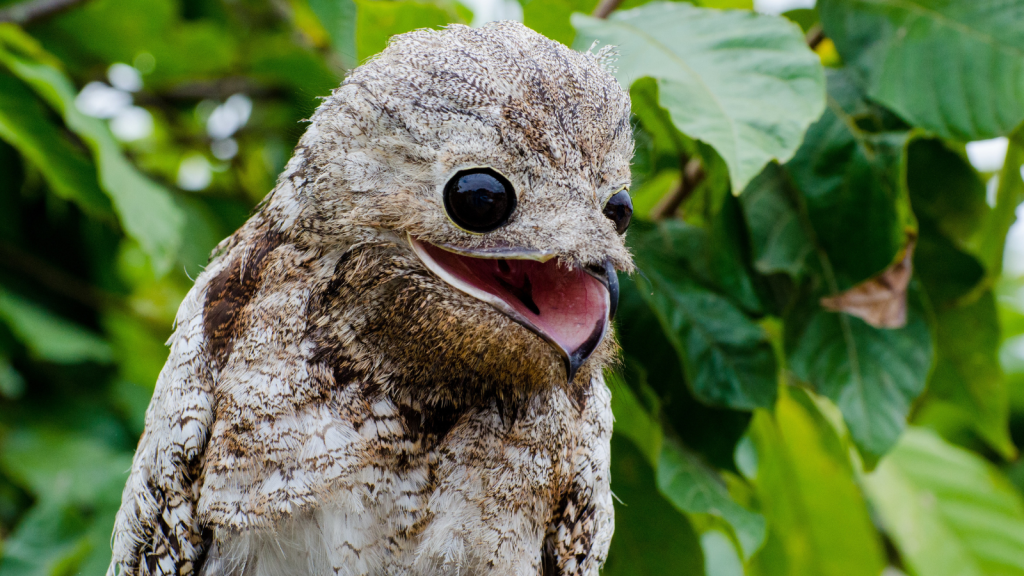Nestled in the shadows of tropical forests, potoos are birds that seem to have leapt straight from a fantasy novel. With their enormous eyes and bizarre, bark-like plumage, these nocturnal creatures are masters of camouflage. Despite their odd appearance, potoos are remarkably skilled hunters, silently snatching insects from the air with their wide beaks. These peculiar birds have long fascinated nature lovers and scientists alike, yet they remain shrouded in mystery due to their elusive nature. Let’s explore some lesser-known facts about these fascinating feathered oddities.
They’re Not Owls
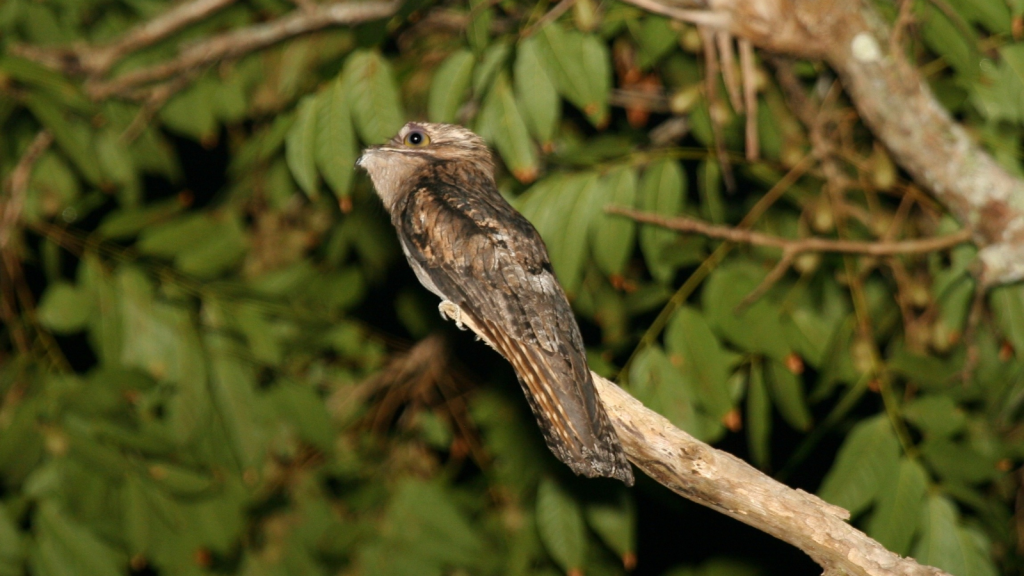
Despite their large eyes and nocturnal habits, potoos aren’t related to owls at all. They belong to the family Nyctibiidae and are more closely related to nightjars and frogmouths. Potoos have unique features that set them apart from other bird families. Their long, slender bodies and upright posture are distinctly different from the stocky build of owls.
Their Eyes Glow in the Dark
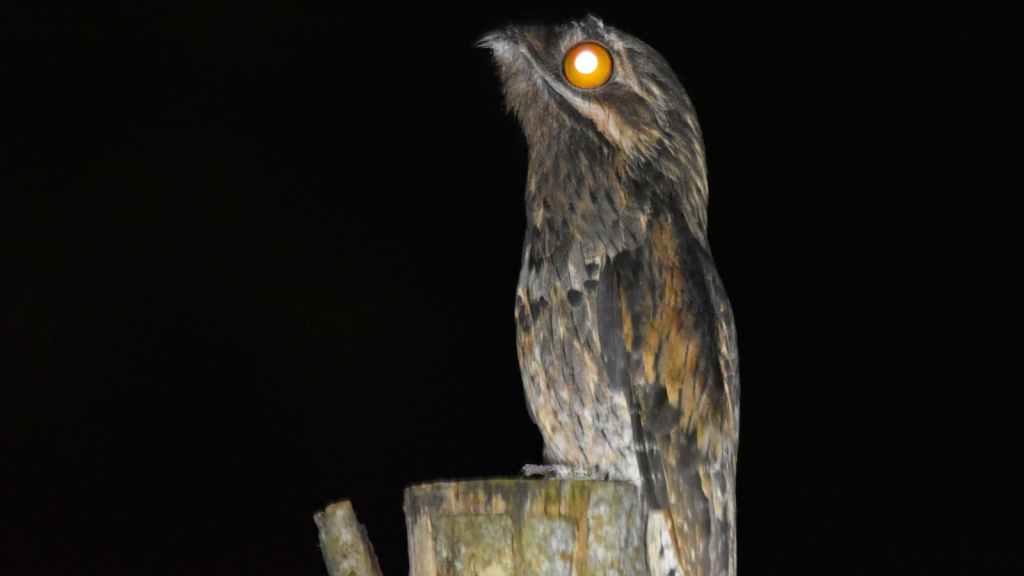
Potoos have enormous eyes that reflect light, creating an eerie glow at night. This feature, called eyeshine, helps them see better in low-light conditions. Their eyes are so large that they can’t move them in their sockets, so potoos have to turn their entire heads to look around. These oversized eyes take up most of the bird’s skull, leaving little room for the brain.
They Have Built-in Peepholes
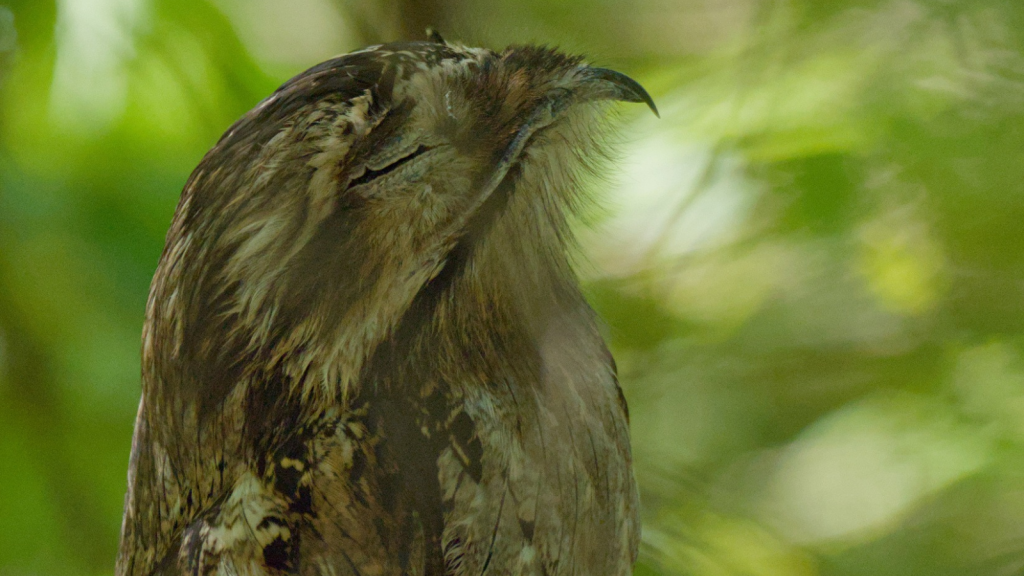
When a potoo closes its eyes, you might think it’s fast asleep. However, these clever birds have slits in their eyelids that allow them to see even with their eyes shut. This adaptation helps them stay alert for predators while appearing to be asleep. These narrow slits are barely visible to the naked eye, making them an excellent secret weapon for survival.
Potoos Are Masters of Disguise
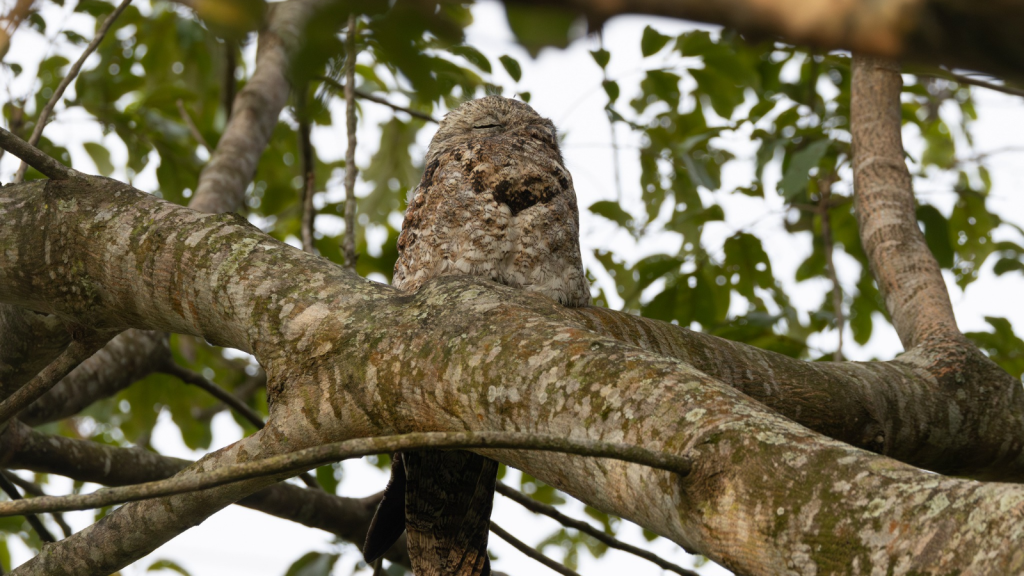
During the day, potoos perch motionless on tree branches, perfectly mimicking broken stumps. Their mottled brown and grey feathers blend seamlessly with tree bark. They even sway gently, like a branch in the breeze, to enhance their camouflage. This remarkable ability to blend in makes potoos nearly invisible to both predators and prey.
They Have Massive Mouths
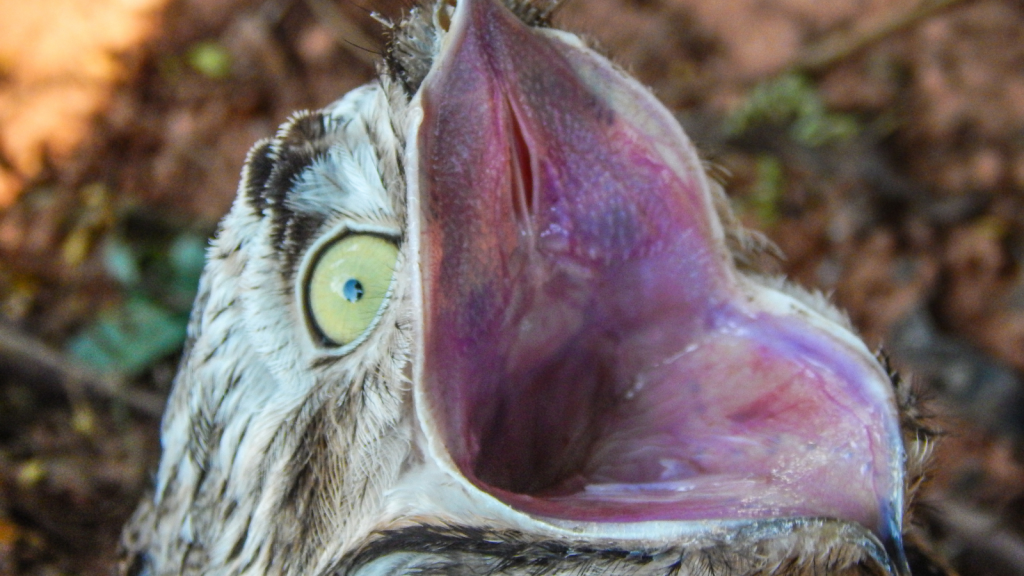
Potoos have disproportionately large mouths compared to their body size. When open, their beaks reveal a gaping maw that can easily swallow large insects whole. This adaptation makes them highly efficient nocturnal hunters. Their wide gape allows them to catch moths, beetles, and even small bats in flight.
Potoos Are Loners
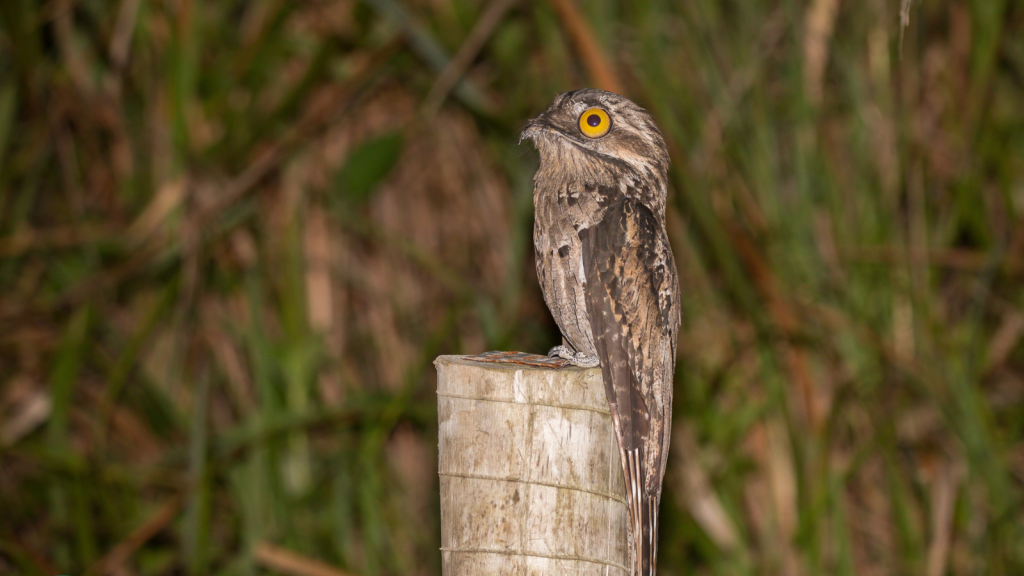
Unlike many bird species, potoos are solitary creatures. They only come together during the breeding season. Even then, pairs don’t stay together long, separating once their chick is independent. This solitary lifestyle helps potoos maintain their excellent camouflage and reduces competition for food in their habitat.
They Lay Just One Egg
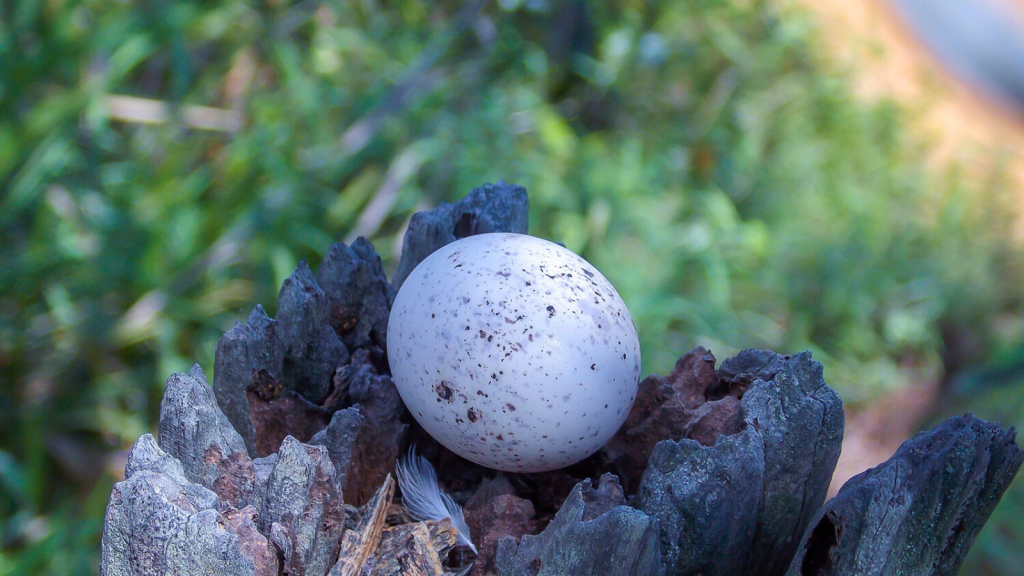
Most potoo species lay a single egg per breeding season. The egg is placed in a small depression on a branch, without building a proper nest. Both parents take turns incubating the egg and caring for the chick. This low reproductive rate makes potoos particularly vulnerable to population declines.
Potoos Have a Spooky Call

The potoo’s call is often described as haunting or ghost-like. Different species have distinct vocalizations, ranging from mournful whistles to loud, barking sounds. These calls echo through the forest at night, adding to the bird’s mysterious aura. The Great Potoo’s call, a deep and resonant “boo-boo-boo,” has earned it the nickname “ghost bird” in some regions.
They’re Found Only in the Americas
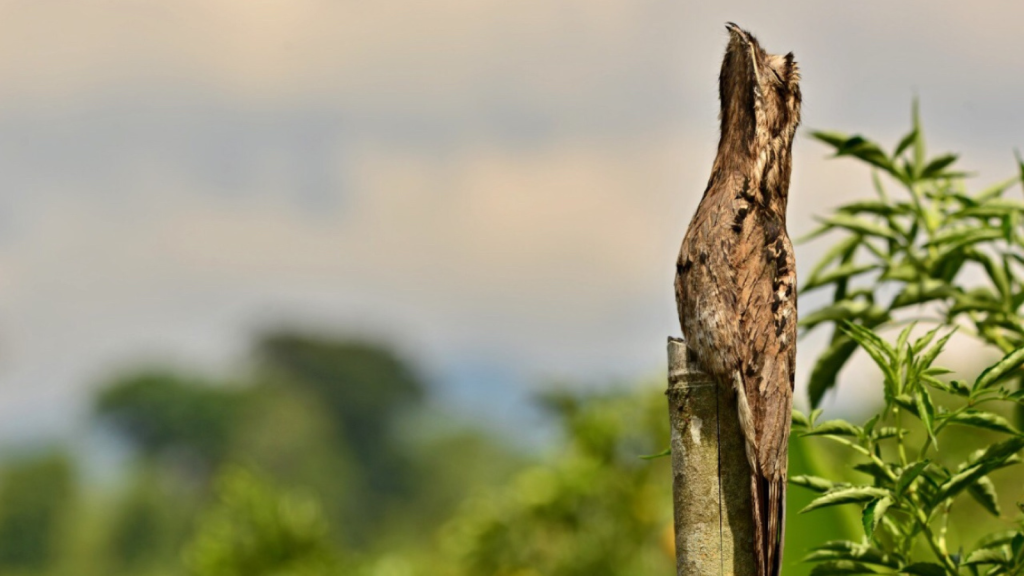
Potoos are exclusively New World birds, found from Mexico down to northern Argentina. Different species inhabit various regions within this range, adapting to local environments. However, they’re all tropical or subtropical forest dwellers. The seven known species of potoos are distributed across this vast area, each with its own specific habitat preferences.
Potoos Have Whiskers
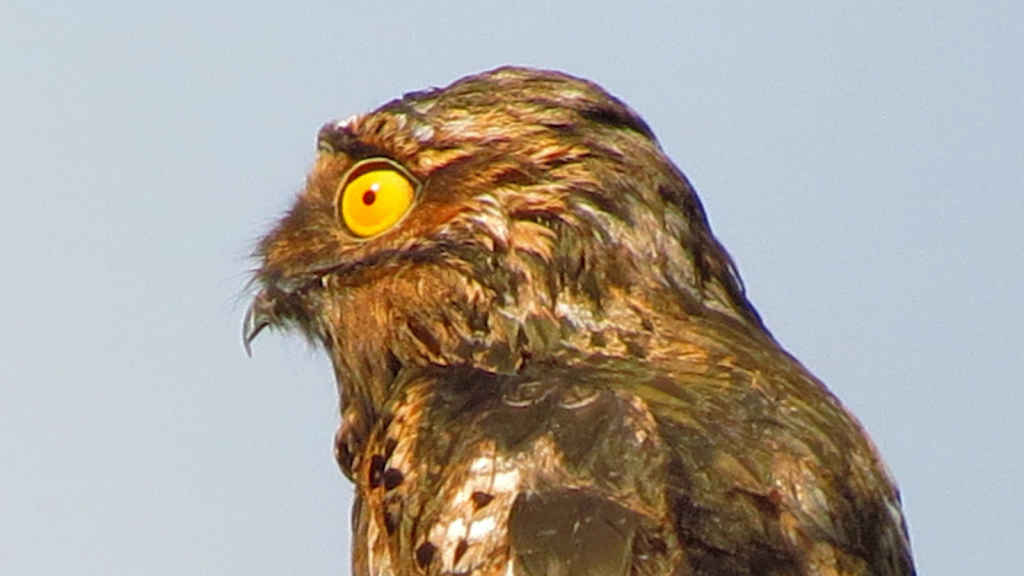
Like many nocturnal birds, potoos have bristles around their beaks called rictal bristles. These whisker-like feathers are thought to help them detect flying insects and navigate in the dark. The bristles may also protect their large eyes from damage during flight. In potoos, these bristles are particularly well-developed, forming a sort of “moustache” around their enormous mouths.
They’re Completely Harmless to Humans
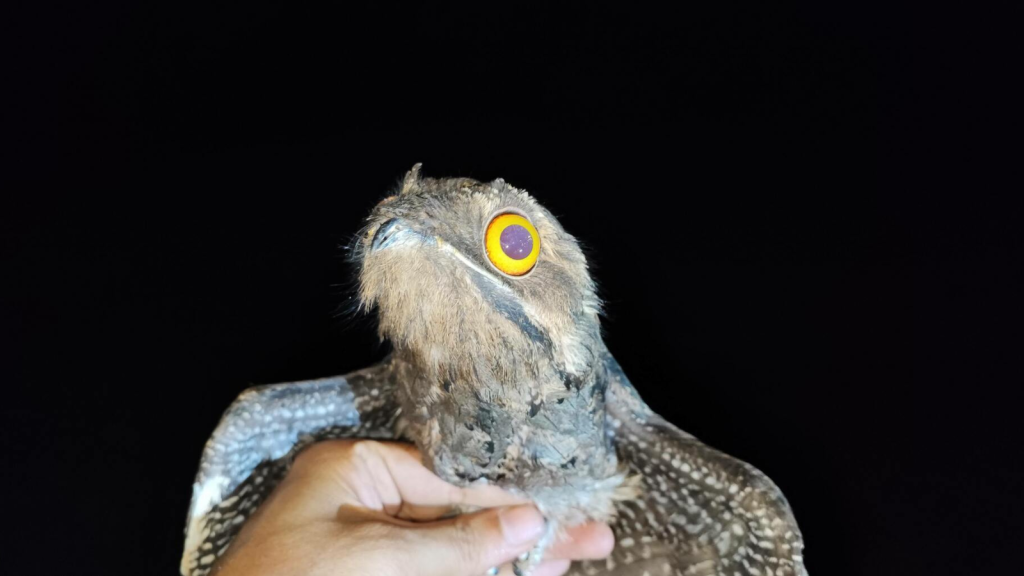
Despite their sometimes eerie appearance and calls, potoos are completely harmless to humans. They’re shy, non-aggressive birds that prefer to avoid contact with people. Their primary defence is their incredible camouflage. If disturbed, a potoo will typically freeze in place rather than fly away, relying on its camouflage to avoid detection.
Potoos Don’t Build Nests
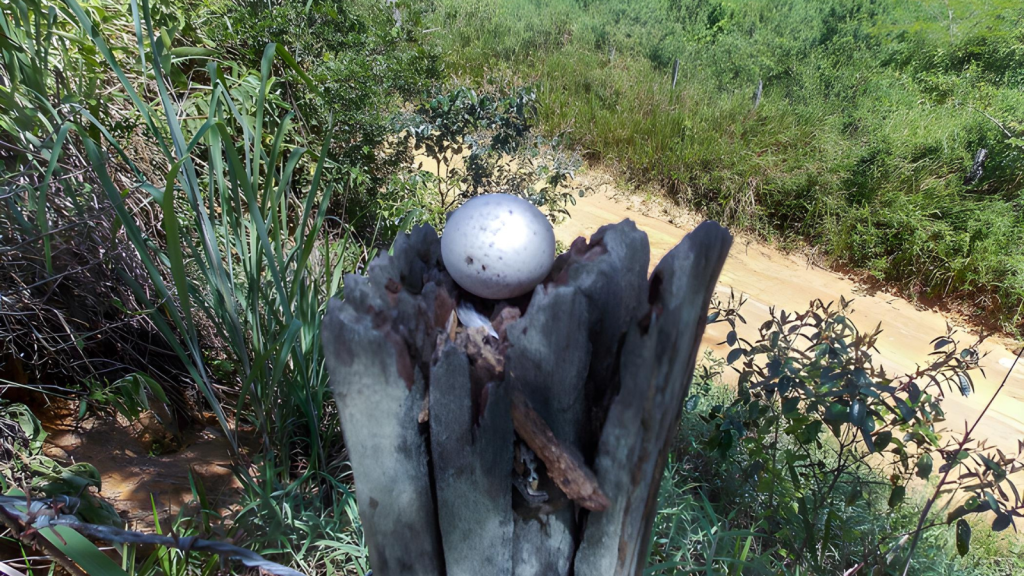
Unlike many birds, potoos don’t construct nests. Instead, they lay their single egg directly on a tree branch. The parent birds use their bodies to shelter the egg and chick from the elements and predators. This unique nesting behaviour makes potoos particularly vulnerable to habitat disturbance and deforestation.
They Have Serrated Beaks
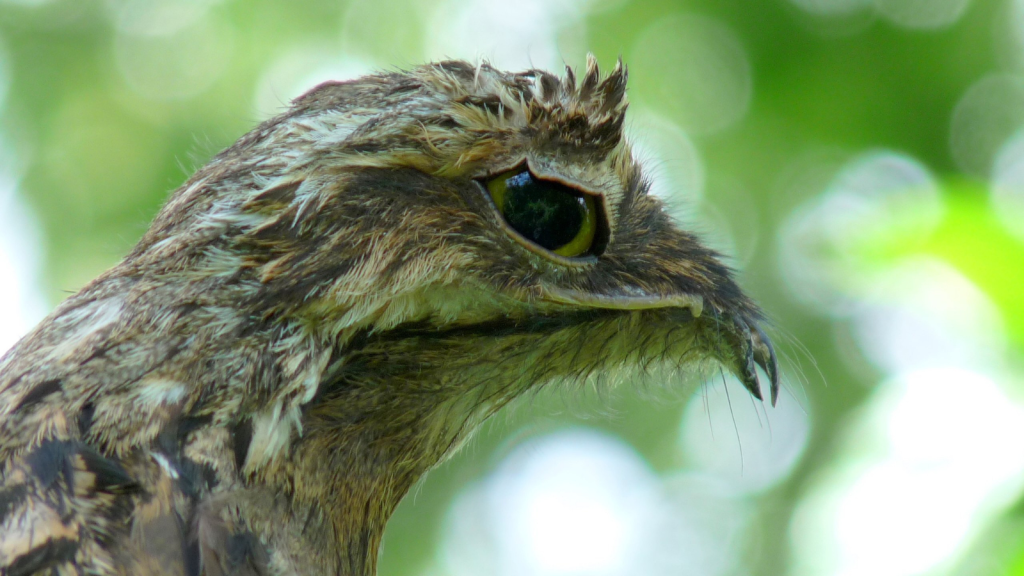
The edges of a potoo’s beak are serrated, like a tiny saw. This adaptation helps them grip slippery insects more easily. It’s just one of the many features that make potoos such effective nocturnal hunters. The serrations are so fine that they’re barely visible to the naked eye, but they make a significant difference in the bird’s ability to catch and hold onto prey.
Potoos Are Poorly Studied
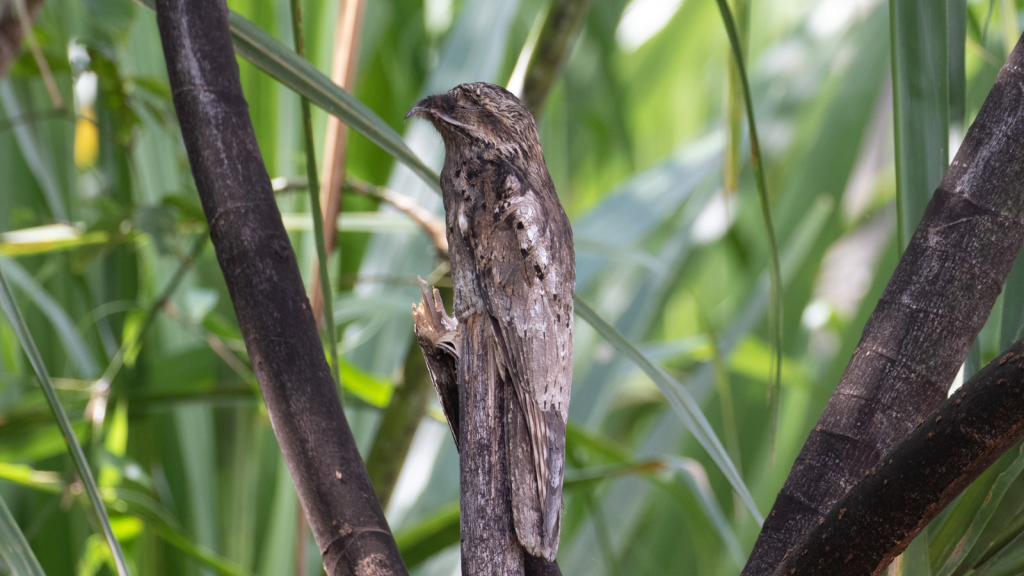
Due to their nocturnal habits and excellent camouflage, potoos are challenging to study in the wild. As a result, there’s still much we don’t know about their behaviour and ecology. Each new study reveals fascinating insights into these enigmatic birds. Recent advancements in night-vision technology and remote sensing are helping researchers uncover more about potoo biology and behaviour.
They’re Facing Habitat Loss
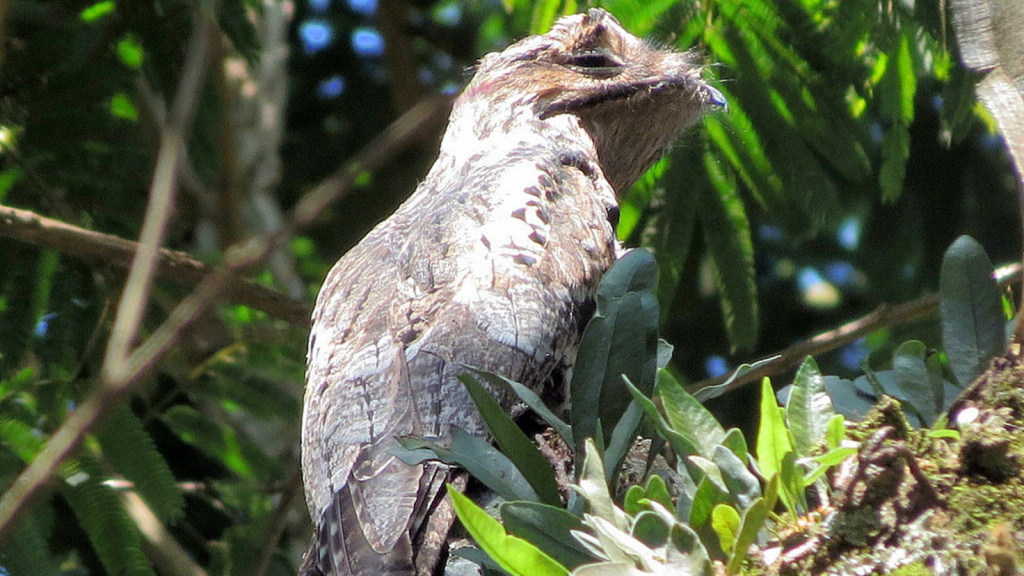
Like many tropical species, potoos are threatened by deforestation and habitat loss. As their forest homes shrink, these unique birds face increasing pressure. Conservation efforts are crucial to ensure the survival of these remarkable creatures for future generations to marvel at. Protecting large tracts of tropical forest is key to preserving potoo populations and the many other species that share their habitat.
Becky is a fervent wildlife enthusiast and pet care expert with a diploma in canine nutrition. Her love for animals stretches beyond the domestic, embracing the wild tapestry of global fauna. With over a decade of experience in animal welfare, Becky lends her expertise to OutlandishOwl through insightful articles, captivating wildlife information, and invaluable guidance on pet nutrition. Her work embodies a deep commitment to understanding the intricate lives of animals and a passion for educating others on sustaining natural habitats. Becky's hands-on conservation efforts and her knack for translating complex dietary science into practical pet feeding tips make her an indispensable voice for creatures great and small.

